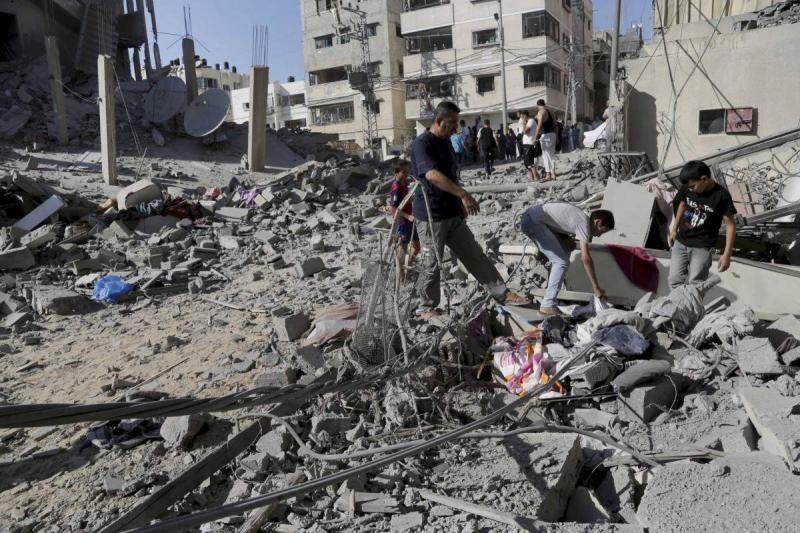While uncertainty and hesitation prevail regarding the possibility of reaching an agreement between Israel and Hamas to cease fire in the Gaza Strip and facilitate a prisoner exchange between the two sides, new details have emerged about the proposal announced by U.S. President Joe Biden last week, indicating that it was prepared by Israel. Negotiators from Qatar, Egypt, and the United States reportedly presented an unpublished document to the Palestinian side, clarifying some points regarding how to begin implementing the proposal or ceasefire, according to an article by David Ignatius in The Washington Post. A source familiar with the talks confirmed that the document contained a clear roadmap for starting to repair the destruction caused by the conflict in Gaza.
**600 Trucks Daily**
From the first day of the ceasefire, Israel will facilitate the entry of more humanitarian aid into the strip, averaging 600 trucks daily, including 50 fuel trucks, as part of the proposal currently under negotiation. Additionally, northern Gaza will receive 300 of those trucks, including the fuel necessary to resume operations at the power plant in central Gaza.
**Sheltering the Displaced**
Furthermore, the document indicated that the proposal addressed how to shelter Palestinians forced to flee their homes. Therefore, efforts will begin to provide at least 60,000 temporary mobile homes and 200,000 tents, along with the removal of debris scattered throughout Gaza using civil bulldozers and other heavy equipment, as soon as an agreement is reached between the two parties. It is also expected that the rehabilitation of hospitals, medical centers, and bakeries across the strip will commence immediately after the agreement is signed, with the maintenance of these essential services during later stages of the agreement.
Work will also begin on reconstructing the infrastructure, including roads, electrical systems, water, sewage, and communication networks that have been destroyed by Israeli bombardment over eight months of war, gradually throughout the strip, with Israel agreeing to allow the entry of necessary equipment. The United Nations, Egypt, and Qatar will lead an international effort for the comprehensive reconstruction of homes, schools, and other life essentials that have been destroyed.
Thus, if the two sides successfully sign the agreement still on the negotiation table, a new Gaza will eventually emerge after months of destruction, death, and near starvation, as reported by the American newspaper. It is noteworthy that negotiations are still ongoing between the two parties to officially approve the proposal revealed by Biden last Friday.
**A Permanent Ceasefire**
However, despite positive statements behind the scenes, the Israeli government led by Benjamin Netanyahu remains hesitant to publicly endorse the proposal, which the American administration has confirmed it previously presented itself. Hamas, on the other hand, insists on linking the three phases of the agreement, ensuring that the third phase inevitably leads to a permanent cessation of war, which Tel Aviv rejects. Ismail Haniyeh, head of the movement's political bureau, confirmed yesterday, Wednesday, that the movement will request an end to the war and the withdrawal of Israel as part of the ceasefire plan, presenting what could be seen as a blow to Biden's proposal.
The draft of this proposal stipulates a three-phase agreement, beginning with a ceasefire for six weeks during which around 30 Israeli prisoners, including women, the injured, and the elderly, would be released in exchange for hundreds of Palestinians. The second phase involves the complete release of all Israeli prisoners, including soldiers, the return of displaced Palestinians to their areas, and the withdrawal of Israeli forces from those areas. The third and final phase will discuss the complete cessation of combat and the total withdrawal of the Israeli army from all of Gaza, followed by discussions on the reconstruction of the devastated sector.




